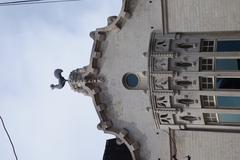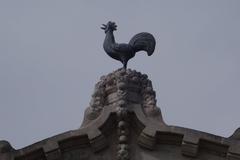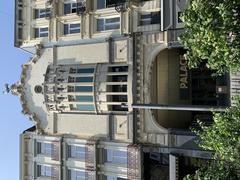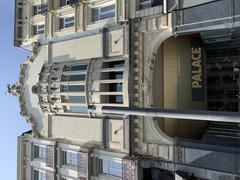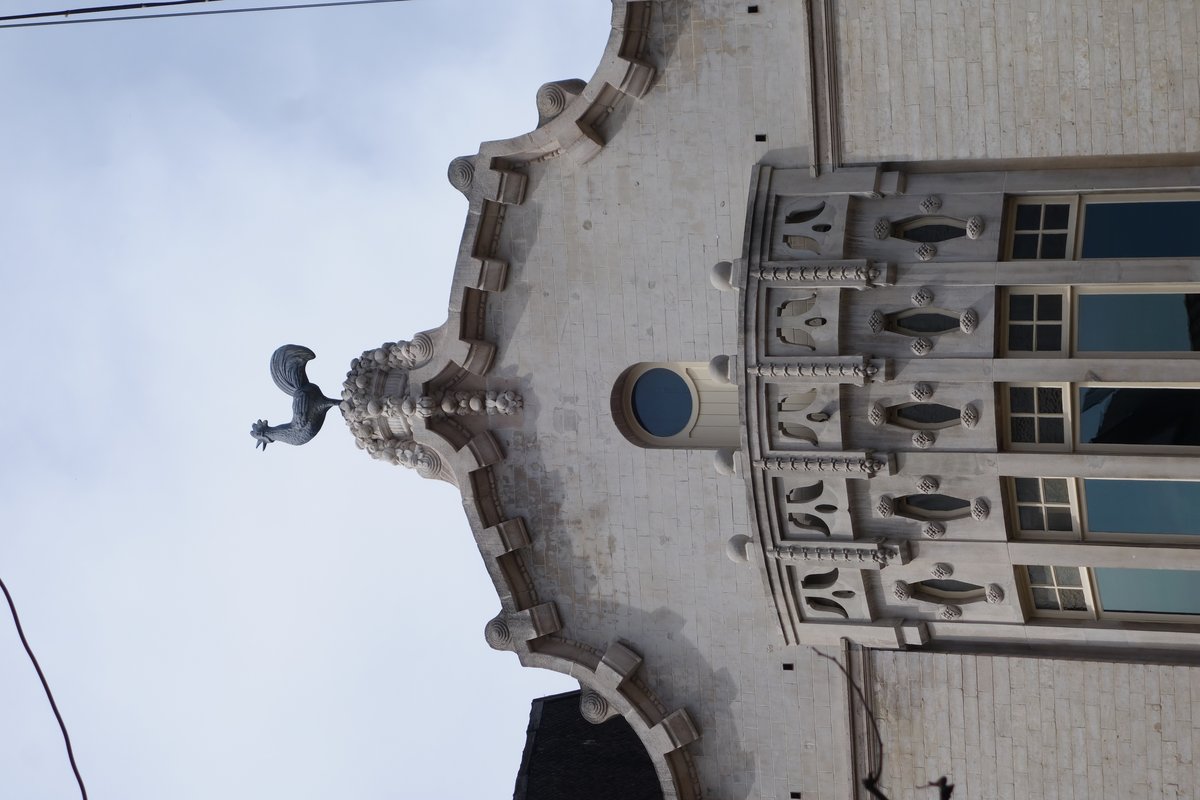
Royal Palace Brussels: Visiting Hours, Tickets, Events & Tourist Guide
Date: 15/06/2025
Introduction
The Royal Palace of Brussels stands as a majestic emblem of Belgium’s cultural heritage and constitutional monarchy. While not a royal residence, it serves as the official workplace of the King and Queen of the Belgians, hosting state ceremonies, diplomatic events, and important receptions. Situated at Place des Palais, facing Brussels Park, the palace is a highlight for visitors, offering free public access to its grand ceremonial halls during the summer months. This guide provides a comprehensive overview of the palace’s history, architecture, visitor information, and nearby attractions to help you plan an enriching visit (Royal Palace of Brussels Wikipedia; FlyAlong; Audiala).
Table of Contents
- Introduction
- Historical Background
- Architectural Significance
- Symbolic and Political Role
- Visiting Hours and Tickets
- Accessibility
- Travel Tips and How to Get There
- Nearby Attractions
- Public Opening, Events & Seasonal Highlights
- FAQ
- Practical Visitor Information
- Visuals and Interactive Elements
- Conclusion
- References
Historical Background
Origins and Early History
The Royal Palace’s site has been a center of power since the Middle Ages. Originally, it was home to the Palace of Coudenberg, a fortified castle and residence for the Dukes of Brabant, later evolving into the administrative heart for the Burgundian and Habsburg rulers. The palace’s roots trace back to the 11th century, reflecting centuries of political importance (Royal Palace of Brussels Wikipedia).
Destruction and Transformation
A devastating fire in 1731 destroyed most of the Coudenberg Palace, leaving only fragments like the court chapel and Aula Magna. The ruins lay untouched for decades until the late 18th-century urban renewal, which created the Place Royale and the adjacent Brussels Park. Modern archaeological excavations have revealed the Coudenberg’s medieval remains, now accessible as the Coudenberg Experience (The Urge to Wander).
Construction of the Present Royal Palace
The current Royal Palace was shaped by 18th- and 19th-century urban planning. It originated from two 17th-century mansions, unified and expanded under King Leopold II. The neoclassical facade, completed in 1904, symbolizes national pride and the monarchy’s role in Belgium’s political landscape (The Urge to Wander).
Architectural Significance
Style and Facade
The palace’s neoclassical facade extends about 50 meters along Place des Palais. Its symmetry, monumental portico, and balustraded roofline are inspired by French neoclassicism, mirroring the grandeur of other European royal palaces (Royal Palace of Brussels Wikipedia).
Interior Spaces
Visitors are greeted by the spectacular Grand Staircase, adorned with white marble and gilded details. Key highlights include:
- Throne Room: Grand chandeliers, intricate parquet floors, and opulent stucco work.
- Hall of Mirrors: Features Jan Fabre’s “Heaven of Delight,” an artwork made of over a million beetle wing cases.
- Empire and Goya Rooms: Display tapestries inspired by Francisco Goya and showcase neoclassical decor (FlyAlong).
- Eight courtyards and over 250 rooms further showcase the palace’s impressive scale (EAA).
Restoration and Preservation
Major renovations in the 1950s and 1980s have preserved the palace’s historic character. Today, the palace is primarily used for official functions, reflecting its ceremonial rather than residential role (Royal Palace of Brussels Wikipedia).
Symbolic and Political Role
The Royal Palace is the administrative heart of the Belgian monarchy. Unlike many European palaces, it is not a royal residence—the King and Queen live at the Palace of Laeken. The palace hosts state ceremonies, diplomatic receptions, and governmental meetings, symbolizing Belgium’s constitutional monarchy and the balance between state and monarchy (Royal Palace of Brussels Wikipedia).
Visiting Hours and Tickets
- Opening Period: The Royal Palace opens to the public each summer, typically from Belgian National Day (July 21) until early September.
- Hours: 10:30 AM to 5:00 PM daily during the opening period.
- Admission: Free for all visitors; guided tours may be available for groups with advance arrangements (FlyAlong).
- Tickets: No advance booking required for individuals; arrive early to avoid long lines, especially on weekends (The Broke Backpacker).
Always verify the latest schedule on the official Royal Palace website.
Accessibility
The Royal Palace is committed to being accessible. Step-free entrances, elevators, and wheelchairs are available on request, granting access to most major halls and exhibition spaces. Some historic sections may have limited access to protect delicate features (FlyAlong).
Travel Tips and How to Get There
- Location: Place des Palais, Brussels.
- Public Transport:
- Metro: Parc/Park (Lines 1, 5), Trône/Troon (Lines 2, 6)
- Train: Brussels Central Station (10-minute walk)
- Tram and Bus: Several lines stop nearby (Royale, Ducale)
- Arriving Early: Visit on weekdays or early mornings to avoid crowds.
- Language: Staff speak English, French, and Dutch; multilingual printed guides are available.
- Facilities: Restrooms and cloakroom at the entrance; no café on-site, but many options nearby.
For more travel tips, consult Faraway Worlds.
Nearby Attractions
- Parc de Bruxelles: Scenic park directly opposite the palace.
- BELvue Museum: Focused on Belgian history (132 m away).
- Coudenberg Archaeological Site: Explore medieval vaults beneath Place Royale.
- Magritte Museum: Surrealist art by René Magritte.
- Mont des Arts: Panoramic city views and cultural venues.
- Grand Place: UNESCO World Heritage Site, 10–15 minutes on foot (FlyAlong).
- Palais de Justice: Architectural landmark with city views (Audiala).
Public Opening, Events & Seasonal Highlights
- Annual Summer Opening: Explore ceremonial halls, state rooms, and art exhibitions.
- Belgium National Day (July 21): Parades, concerts, fireworks around Place des Palais.
- Changing of the Guard: At 2:30 PM during the open season.
- Special Events: Art Deco heritage tours, Ommegang Pageant (UNESCO-listed historical reenactment), and classical concerts in Brussels Park.
- Temporary Exhibitions: Feature Belgian history and contemporary art.
FAQ
Q: When is the Royal Palace open to the public?
A: Annually from July 21 to early September; check the official website for dates.
Q: Is admission free?
A: Yes, during the public opening period.
Q: Are guided tours available?
A: Generally not for individuals; free printed guides and multilingual panels are provided. Group tours by advance arrangement.
Q: Is the palace accessible for visitors with disabilities?
A: Step-free entrances, elevators, and wheelchairs are available.
Q: Can I take photos inside?
A: Yes, but without flash or tripods.
Practical Visitor Information
- Security: All visitors undergo screening; large bags must be checked.
- Dress Code: Respectful attire required.
- Duration: 1–1.5 hours recommended for a thorough visit.
- Weather: Be prepared for changing conditions if exploring outdoor sites (Faraway Worlds).
Visuals and Interactive Elements
- Images: Look for high-quality photos of the Grand Staircase, Hall of Mirrors, Throne Room, and palace exterior. Alt tags should include “Royal Palace of Brussels Grand Staircase,” “Hall of Mirrors Royal Palace Brussels,” “Royal Palace of Brussels exterior view.”
- Maps: Interactive maps showing the palace and nearby attractions enhance planning.
- Virtual Tours: Available on the official Royal Palace website.
Conclusion
A visit to the Royal Palace of Brussels is a journey through Belgium’s living history—a fusion of monarchic tradition, neoclassical architectural splendor, and vibrant contemporary culture. The palace’s unique public opening offers access to magnificent state rooms and special exhibitions. Coupled with its central location near major museums and landmarks, the Royal Palace is a must-see for any Brussels itinerary. Plan ahead using official resources, explore nearby historical sites, and enrich your experience with guided or self-guided tours. For up-to-date visitor information, event schedules, and virtual tours, consult the Royal Palace official website and download the Audiala app for insider tips and audio guides.
